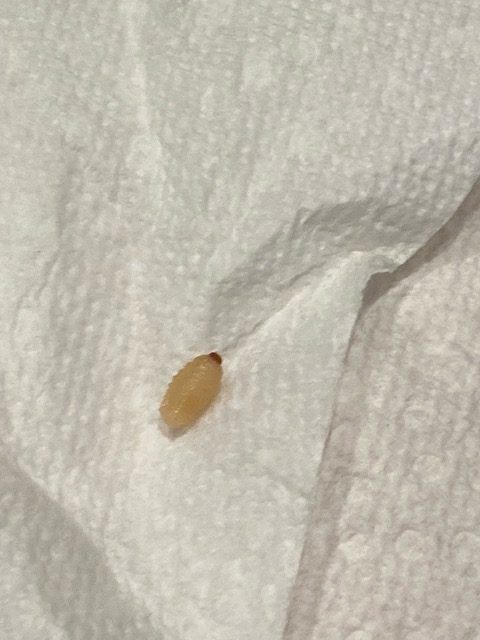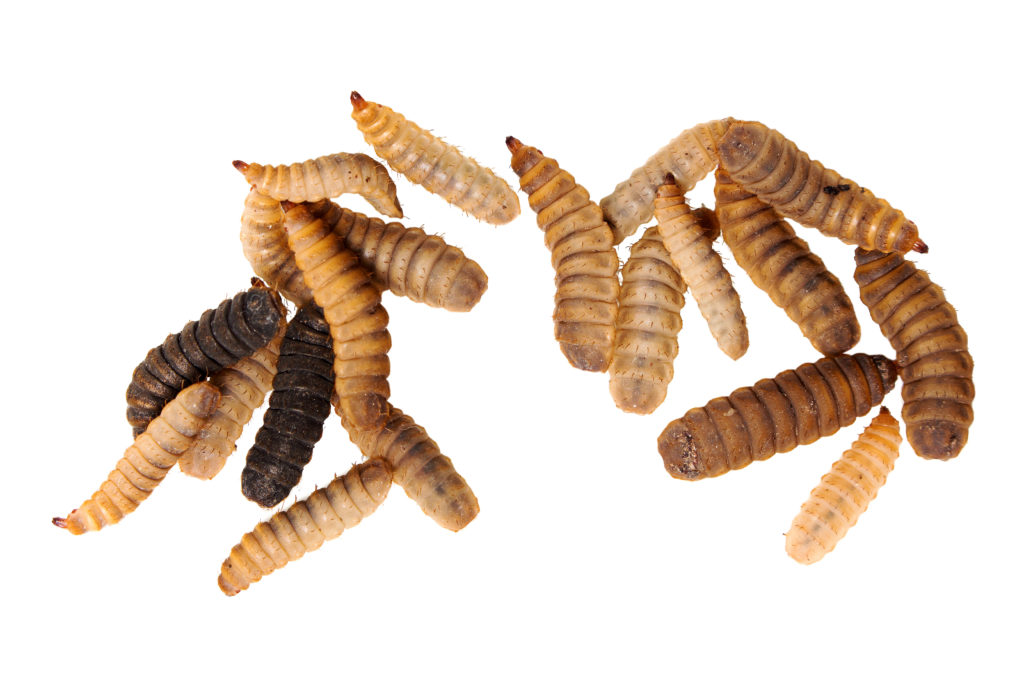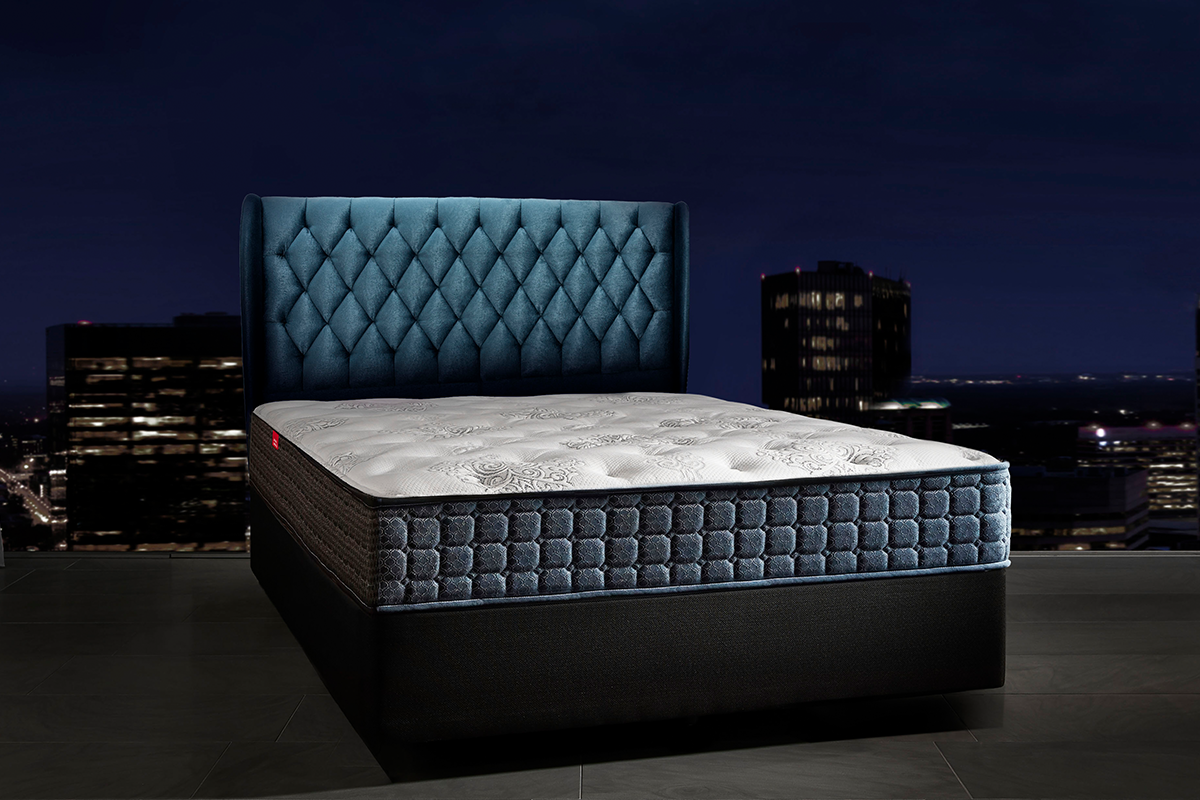If you've noticed tiny creatures wriggling around in your kitchen sink, chances are you have a larvae infestation. These small, worm-like creatures can be a nuisance and may even pose a health risk if left unchecked. But fear not, there are ways to get rid of larvae in your kitchen sink and prevent them from coming back. Follow these tips to keep your sink clean and larvae-free.How to Get Rid of Larvae in Your Kitchen Sink
The first step in getting rid of larvae in your kitchen sink is to thoroughly clean the area. Use a disinfectant cleaner to wipe down the sink, faucet, and drain. Make sure to remove any food particles or debris that may be attracting the larvae. For a deeper clean, you can use a mixture of hot water and vinegar to scrub the sink and drain.How to Clean Your Kitchen Sink to Prevent Larvae
There are a few different types of larvae that may be found in your kitchen sink. The most common are drain fly larvae, which are small, black worms that feed on organic matter in drains. Fruit fly larvae may also be found in sinks that have fruit or vegetable scraps in them. These larvae are white and may be found in standing water. Drain moth larvae are another type that may infest kitchen sinks, typically found in drains with decaying organic matter.Common Types of Larvae Found in Kitchen Sinks
Larvae are attracted to moist, dark places with a food source. Kitchen sinks provide the perfect environment for them to thrive. Food particles, moisture, and warmth from hot water make for an ideal breeding ground for larvae. They may also be attracted to standing water in sinks that are not used frequently.Why Do Larvae Appear in Kitchen Sinks?
If you prefer to use natural methods to get rid of larvae in your kitchen sink, there are a few options to try. Pouring boiling water down the drain can kill larvae and their eggs. You can also use a mixture of baking soda and vinegar, followed by boiling water, to clean and disinfect the drain. Another natural option is to use essential oils such as peppermint or eucalyptus, which are known to repel insects.Natural Remedies for Removing Larvae from Kitchen Sinks
Preventing larvae from infesting your kitchen sink is key to keeping them out for good. Make sure to clean your sink regularly and avoid letting food particles and debris build up in the drain. Use a drain cover to catch any food scraps that may go down the drain, and make sure to run hot water down the drain after each use. If you have fruit or vegetable scraps, dispose of them in a compost bin or take them out to your outdoor trash to avoid attracting fruit fly larvae.How to Prevent Larvae from Returning to Your Kitchen Sink
Aside from actually seeing larvae in your sink, there are a few signs that may indicate an infestation. If you notice a foul odor coming from your drain, this could be a sign of decaying organic matter and larvae present. You may also see small, white or black worms in and around your sink or notice an increase in fruit flies or drain moths.Signs of a Larvae Infestation in Your Kitchen Sink
If natural methods are not effective in getting rid of larvae in your kitchen sink, it may be time to call in a professional pest control service. They will have the tools and knowledge to identify the type of larvae and provide effective treatment to eliminate them. They can also offer advice on how to prevent future infestations.Professional Pest Control Options for Larvae in Kitchen Sinks
After removing larvae from your kitchen sink, it's important to properly dispose of them to prevent them from returning. You can use a paper towel or tissue to pick them up and dispose of them in an outdoor trash bin. Avoid flushing them down the drain, as this may not completely eliminate them and could lead to further infestations.How to Properly Dispose of Larvae from Your Kitchen Sink
To keep your kitchen sink free of larvae, remember to regularly clean and disinfect the area. Avoid letting food particles build up in the drain and use a drain cover to catch any scraps that may go down. Run hot water down the drain after each use and consider using essential oils or other natural repellents to keep larvae at bay. With these tips, you can enjoy a clean and larvae-free kitchen sink.Tips for Keeping Your Kitchen Sink Clean and Larvae-Free
The Importance of a Well-Designed Kitchen Sink

Creating a Functional and Aesthetically Pleasing Space
/Getting-rid-of-drain-flies-2656670-V1-1340ca9ec3a743cb95a366862a9961c1.png) A kitchen sink is often seen as a utilitarian and mundane feature of a home. However, its design and placement can significantly impact the overall functionality and aesthetic of a kitchen. It is not just a place for washing dishes, but also a central hub for food preparation, clean-up, and even socializing. Therefore, it is essential to carefully consider the design of your kitchen sink, especially when it comes to issues such as
larvae in the kitchen sink
.
A kitchen sink is often seen as a utilitarian and mundane feature of a home. However, its design and placement can significantly impact the overall functionality and aesthetic of a kitchen. It is not just a place for washing dishes, but also a central hub for food preparation, clean-up, and even socializing. Therefore, it is essential to carefully consider the design of your kitchen sink, especially when it comes to issues such as
larvae in the kitchen sink
.
Preventing Unwanted Pests and Bacteria
 One of the most significant concerns with a poorly designed kitchen sink is the potential for attracting unwanted pests and bacteria. A kitchen sink that does not have a proper drainage system or is not regularly cleaned can become a breeding ground for
larvae and other insects
. This can not only be a nuisance but also a health hazard for you and your family. Therefore, it is crucial to choose a sink design that allows for easy cleaning and maintenance, minimizing the risk of any pests or bacteria infestations.
One of the most significant concerns with a poorly designed kitchen sink is the potential for attracting unwanted pests and bacteria. A kitchen sink that does not have a proper drainage system or is not regularly cleaned can become a breeding ground for
larvae and other insects
. This can not only be a nuisance but also a health hazard for you and your family. Therefore, it is crucial to choose a sink design that allows for easy cleaning and maintenance, minimizing the risk of any pests or bacteria infestations.
Maximizing Space and Efficiency
 A well-designed kitchen sink can also help maximize the space and efficiency of your kitchen. If you have a small kitchen, opting for a compact sink with a single bowl can free up counter space for food preparation and other tasks. On the other hand, if you have a larger kitchen, a double or triple bowl sink can provide the added convenience of separate spaces for washing, rinsing, and drying dishes. Additionally, choosing the right placement for your sink, such as near the dishwasher or stove, can also increase efficiency in the kitchen.
A well-designed kitchen sink can also help maximize the space and efficiency of your kitchen. If you have a small kitchen, opting for a compact sink with a single bowl can free up counter space for food preparation and other tasks. On the other hand, if you have a larger kitchen, a double or triple bowl sink can provide the added convenience of separate spaces for washing, rinsing, and drying dishes. Additionally, choosing the right placement for your sink, such as near the dishwasher or stove, can also increase efficiency in the kitchen.
Enhancing the Overall Design of Your Kitchen
 Last but not least, a well-designed kitchen sink can enhance the overall design of your kitchen. With a wide range of materials, colors, and styles available, you can choose a sink that complements your kitchen's aesthetic and adds a touch of personality to the space. Whether you prefer a sleek and modern stainless steel sink or a classic farmhouse style, the right sink can tie the entire kitchen design together and make it a visually appealing and inviting space.
So, the next time you encounter
larvae in your kitchen sink
, remember that it may be a sign of a poorly designed sink. By carefully considering factors such as drainage, cleanliness, efficiency, and design, you can ensure that your kitchen sink not only serves its functional purpose but also adds to the overall beauty and functionality of your kitchen.
Last but not least, a well-designed kitchen sink can enhance the overall design of your kitchen. With a wide range of materials, colors, and styles available, you can choose a sink that complements your kitchen's aesthetic and adds a touch of personality to the space. Whether you prefer a sleek and modern stainless steel sink or a classic farmhouse style, the right sink can tie the entire kitchen design together and make it a visually appealing and inviting space.
So, the next time you encounter
larvae in your kitchen sink
, remember that it may be a sign of a poorly designed sink. By carefully considering factors such as drainage, cleanliness, efficiency, and design, you can ensure that your kitchen sink not only serves its functional purpose but also adds to the overall beauty and functionality of your kitchen.








/Indianmeal-Moth-Larva-USDA_ARS-Scott-Bauer-58af00643df78c345b3e5202.jpg)















:max_bytes(150000):strip_icc()/GettyImages-123535377-58193b2a5f9b581c0bb9d223.jpg)




:max_bytes(150000):strip_icc()/GettyImages-128140549-5819383e5f9b581c0bb91923.jpg)























































:max_bytes(150000):strip_icc()/how-do-i-dispose-of-used-cooking-oil-908995_FINAL-5b43902cc9e77c003736f7bc.png)














